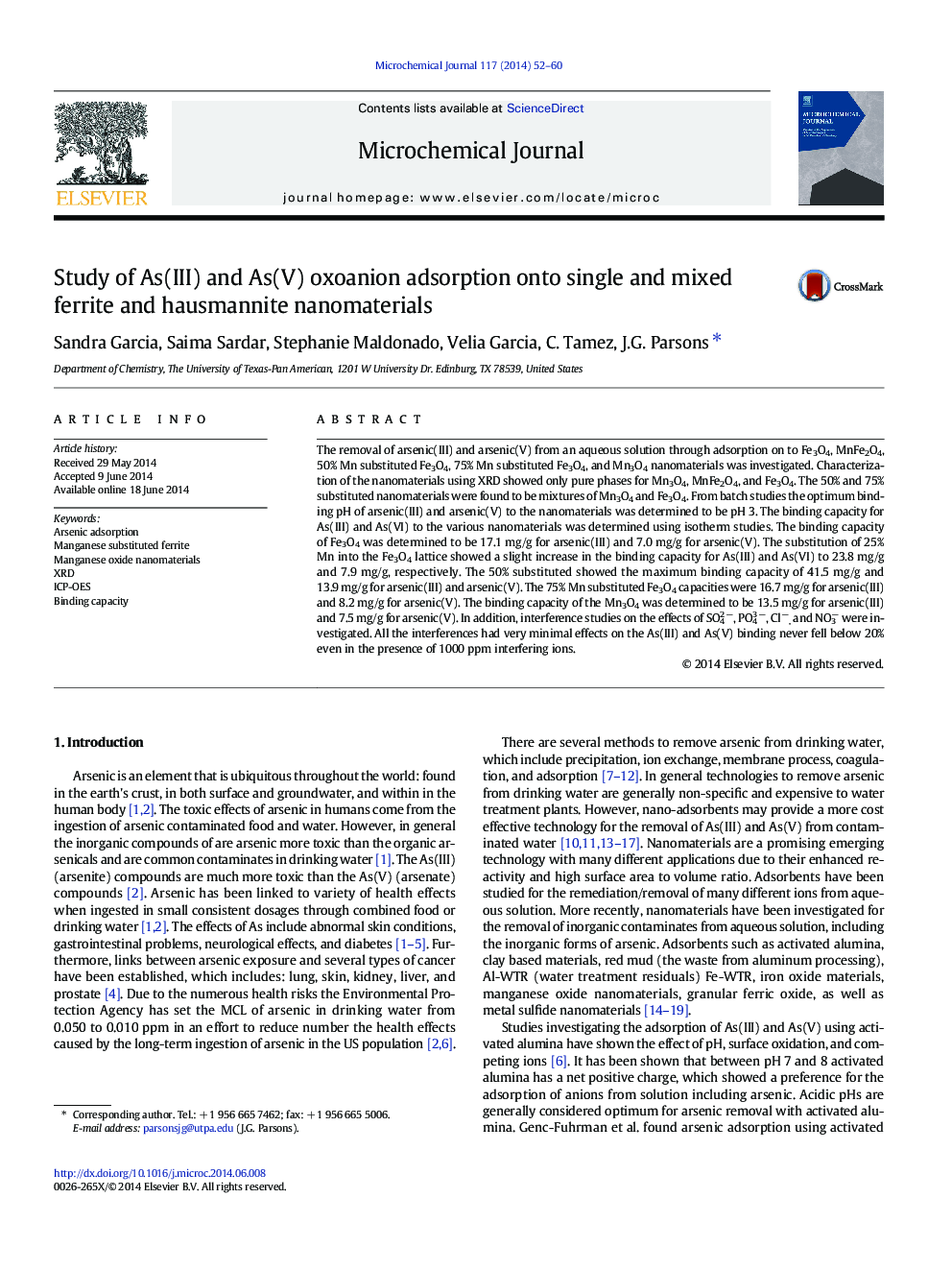| Article ID | Journal | Published Year | Pages | File Type |
|---|---|---|---|---|
| 7642732 | Microchemical Journal | 2014 | 9 Pages |
Abstract
The removal of arsenic(III) and arsenic(V) from an aqueous solution through adsorption on to Fe3O4, MnFe2O4, 50% Mn substituted Fe3O4, 75% Mn substituted Fe3O4, and Mn3O4 nanomaterials was investigated. Characterization of the nanomaterials using XRD showed only pure phases for Mn3O4, MnFe2O4, and Fe3O4. The 50% and 75% substituted nanomaterials were found to be mixtures of Mn3O4 and Fe3O4. From batch studies the optimum binding pH of arsenic(III) and arsenic(V) to the nanomaterials was determined to be pHÂ 3. The binding capacity for As(III) and As(VI) to the various nanomaterials was determined using isotherm studies. The binding capacity of Fe3O4 was determined to be 17.1Â mg/g for arsenic(III) and 7.0Â mg/g for arsenic(V). The substitution of 25% Mn into the Fe3O4 lattice showed a slight increase in the binding capacity for As(III) and As(VI) to 23.8Â mg/g and 7.9Â mg/g, respectively. The 50% substituted showed the maximum binding capacity of 41.5Â mg/g and 13.9Â mg/g for arsenic(III) and arsenic(V). The 75% Mn substituted Fe3O4 capacities were 16.7Â mg/g for arsenic(III) and 8.2Â mg/g for arsenic(V). The binding capacity of the Mn3O4 was determined to be 13.5Â mg/g for arsenic(III) and 7.5Â mg/g for arsenic(V). In addition, interference studies on the effects of SO42Â â, PO43Â â, Clâ, and NO3â were investigated. All the interferences had very minimal effects on the As(III) and As(V) binding never fell below 20% even in the presence of 1000Â ppm interfering ions.
Related Topics
Physical Sciences and Engineering
Chemistry
Analytical Chemistry
Authors
Sandra Garcia, Saima Sardar, Stephanie Maldonado, Velia Garcia, C. Tamez, J.G. Parsons,
